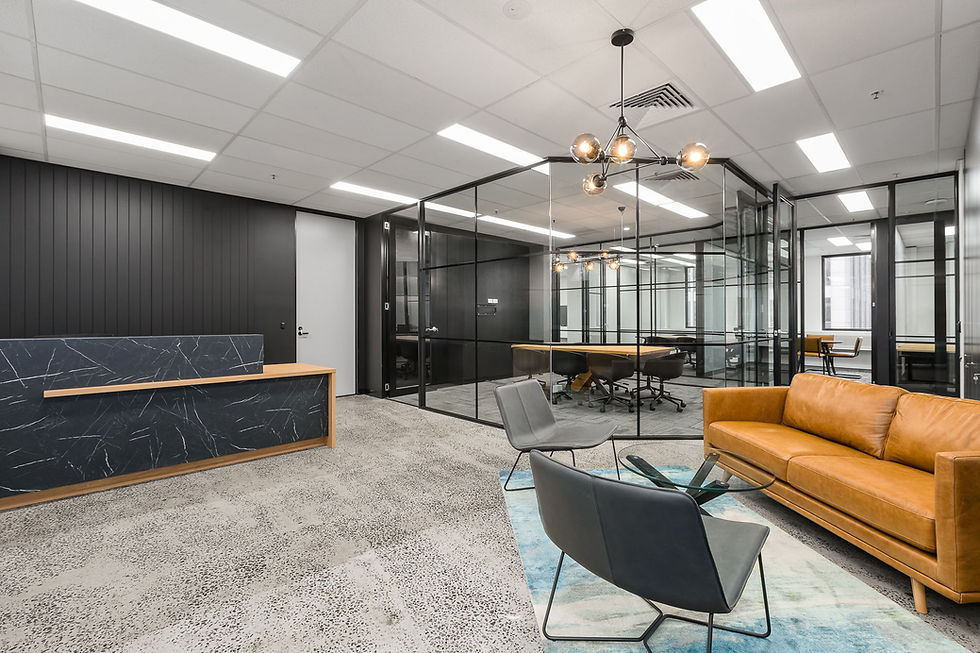Prefab Homes: The Future of Fast and Efficient Construction
- Amelie Lawrence
- May 29, 2023
- 4 min read
Updated: Jul 8, 2024
In today's fast-paced world, the need for efficient and affordable housing solutions is more important than ever. With skyrocketing real estate prices and a growing demand for sustainable living, prefab homes are becoming an increasingly popular choice for homebuyers. But what exactly are prefab homes, and how do they differ from traditional construction methods? In this article, we'll explore the world of prefab homes, from their unique benefits and features to the latest trends and technologies driving this growing industry.
Prefab Homes: A Brief Overview:

Prefab homes, short for prefabricated homes, are houses that are built off-site in a factory setting before being transported to their final location. This modern construction method offers a range of benefits over traditional construction, such as reduced construction time, lower costs, and increased sustainability. Prefab homes come in a variety of styles and designs, from simple modular homes to custom-built luxury residences. With the advancements in prefab home technology and the growing demand for affordable, eco-friendly housing, the prefab home industry is set to revolutionize the way we build and live.
The Benefits of Prefab Homes:
Prefab homes offer several advantages over traditional construction methods:
- Time-Saving: Since prefab homes are built off-site, construction time is significantly reduced. This means that homeowners can move into their new home faster, which can be especially beneficial in areas with a high demand for housing.
- Cost-Effective: Prefab homes are often more affordable than traditionally built homes, as they can be built in a controlled factory setting, which helps to reduce labor and material costs.
- Quality Control: Building a prefab home in a factory allows for better quality control, ensuring that the finished product meets strict construction standards and is free from defects.
- Customization: Many prefab home companies offer a wide range of design options, allowing homeowners to create a home that suits their specific needs and preferences.
- Sustainability: Prefab homes are often built with eco-friendly materials and energy-efficient features, making them an attractive option for environmentally conscious homebuyers.
Types of Prefab Homes: From Modular to Custom Designs:
There are several types of prefab homes available on the market, including:
- Modular Homes: These are the most common type of prefab homes and consist of multiple pre-built sections, or modules, that are assembled on-site.
- Panelized Homes: These homes are built using pre-made wall panels that are constructed off-site and then assembled on-site.
- Custom Prefab Homes: Some companies specialize in creating custom prefab homes, allowing homeowners to design their dream home from scratch.
- Shipping Container Homes: A more recent trend in the prefab home industry involves transforming shipping containers into unique, modern living spaces.
The Latest Trends in Prefab Home Construction:
As the prefab home industry continues to grow and evolve, several trends have emerged that are shaping the future of construction:
- Smart Home Integration: With the rise of smart home technology, many prefab home companies are now offering integrated smart home systems that allow homeowners to control their home's lighting, temperature, security, and more remotely.
- Eco-Friendly Materials: The use of sustainable and eco-friendly materials, such as reclaimed wood and recycled metal, is becoming increasingly popular in prefab home construction.
- Passive House Design: Some prefab home builders are focusing on passive house design principles, which prioritize energy efficiency and sustainability.
- Customization and Personalization: As demand for prefab homes continues to grow, so too does the desire for customization and personalization. Homebuyers are increasingly looking for unique designs and features that reflect their individual tastes and needs.
Eco-Friendly and Sustainable Prefab Homes:
Prefab homes are an ideal solution for homebuyers looking to reduce their environmental footprint. Many prefab home companies prioritize the use of sustainable materials, such as reclaimed wood and recycled metal, in their construction process. Additionally, prefab homes often feature energy-efficient appliances and systems, such as solar panels and high-performance insulation, which help to reduce the home's overall energy consumption.
The Future of Prefab Homes: Smart Home Integration and More:
As technology continues to advance, the prefab home industry is poised to benefit from new innovations and developments. One key area of growth is likely to be smart home integration, with more and more prefab home builders offering integrated systems that allow homeowners to control their home's lighting, temperature, security, and more remotely. Additionally, as the demand for eco-friendly and sustainable housing solutions continues to grow, we can expect to see even more advancements in the use of sustainable materials and energy-efficient features in prefab home construction.
Conclusion:
With their numerous benefits, including reduced construction time, cost savings, and increased sustainability, prefab homes are quickly becoming the go-to choice for homebuyers seeking an efficient and affordable housing solution. As technology continues to advance and the demand for eco-friendly living options grows, the prefab home industry is set to play a crucial role in shaping the future of construction. By embracing the latest trends and innovations, from smart home integration to sustainable materials, prefab homes are poised to become an increasingly popular and essential part of the modern housing landscape.







Comments